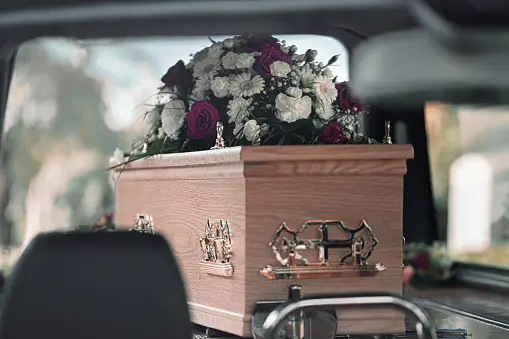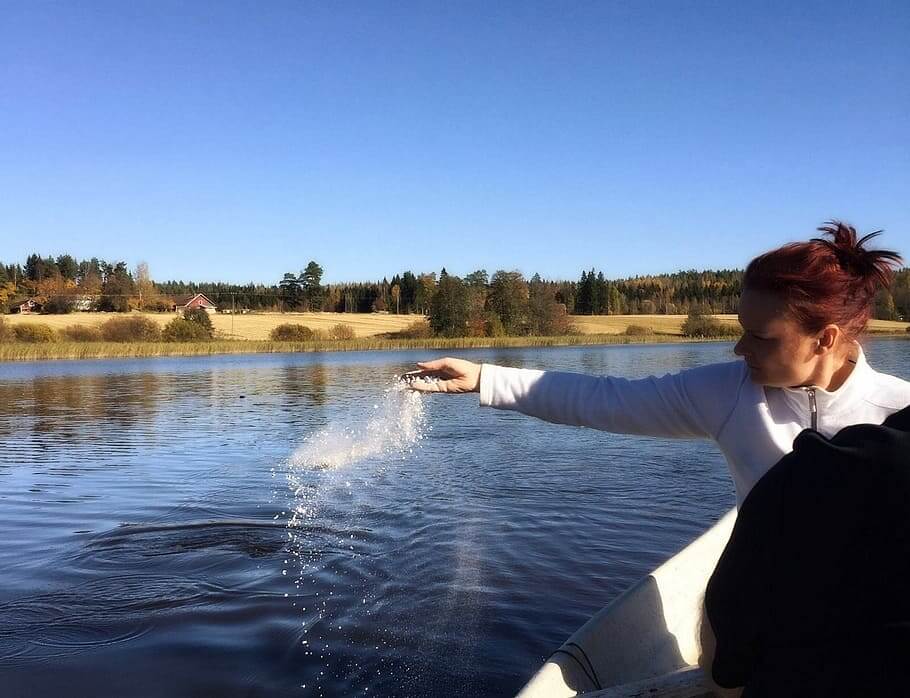How Long Does It Take To Cremate A Body?

It is common to feel a great deal of sadness and pain when a loved one dies, whether from natural or accidental causes. Often, cremation is chosen as a burial option after the deceased passes away.
It is important to consider a number of factors before performing a cremation, such as how long one should wait before doing so. In this article, we will discuss how long it takes to cremate a body, what the advantages and disadvantages will be, what the process will be, and the factors to consider when choosing when to perform a cremation.
How Long Does It Take to Cremate a Body?
Cremation usually takes around two to three hours to complete, depending on the size of the person. Cremation can take as long as three hours for a large-bodied person. As soon as the cremation has been completed, the ashes are delivered to the family in an urn marked with the deceased’s name.
Cremation has become more popular in recent years as it offers the option of resting in peace with the remains of a deceased loved one. For many years, burial has been the preferred method of burying the remains of someone who has died.
Burial indeed entails burying a body, while cremation involves burning remains to ash. Cremation, in comparison, represents a more practical option, especially in terms of logistics.
Cremation offers the option of preserving or scattering the remains in a place that holds personal significance for the family members. Here are a few of the advantages of cremation in regard to funeral arrangements.
What is the Cremation of a Body About?
A cremation is the practice of reducing the deceased to ashes and placing the ashes into a funeral urn. It is a short process that takes about 2 to 4 hours.
Cremated remains can be placed in a small urn that can be kept at home or in a mausoleum, where loved ones can visit them.
Additionally, the remains can also be scattered in an environment or landscape selected by the family. This depends on the will of the deceased and their family members.
Symbolic Meaning of the Cremation of a Body
In some cultures, fire is considered important in the cremation process and is viewed as a means of facilitating the transfer between the living and the dead.
Flames, when raised, represent the impulse towards the divine and rebirth. Fire is considered a form of purification and light.
Because flames ascend, fire has an earthly origin but is considered from heaven, so cremation is symbolic of a heavenly fate.
What is the Cremation Process Like?
The cremation process is carried out individually, beginning with the preparation of the body. Jewelry watches, and other valuable items are removed and given to the family. After being exposed to extreme temperatures (up to 980 degrees Celsius), the body is turned to ashes in a special chamber or oven.
Despite the fact that the deceased is not directly exposed to fire, it is rather heated to dehydrate the body, which then burns until it becomes ash powder naturally. Despite some doubts that exist, the process has all the security guarantees, with the aim of transmitting confidence in family members.
Why do we have to Wait 24 Hours to Bury?
From generation to generation, it has been believed that you must wait 24 hours to bury a deceased person. Medical and legal reasons support this belief, however.
Post-mortem examinations are sometimes necessary in order to determine the cause of death, which can delay burial.
It is also possible for burial to be delayed in order to meet legal or religious requirements. For example, in some cultures, a period of mourning is required before a burial is carried out.
To avoid complications, it is recommended that the burial of a deceased person be carried out as soon as possible after death, as the body of a deceased person begins to decompose quickly after death.
There is no scientific or legal basis for waiting 24 hours to bury a deceased person. However, there may be circumstances that make it necessary to delay the burial.
Regarding the burial of loved ones, it is important to respect the traditions and beliefs of each culture and community. In the end, what matters is to honor the life of the deceased person and say goodbye to them in a way that is considered appropriate and respectful.
How long does it take to deliver the ashes of a deceased person?

Depending on the country or funeral home that handles the process, the delivery of deceased ashes may differ.
Delivery may take several days or even weeks in some cases, while it may be immediate in others.
Legal and administrative procedures must be completed before the delivery of ashes can take place, which can cause delays.
In addition, some cases require the authorization of the deceased’s family or the person designated by them.
Obtain specific information about the delivery time of the ashes from the funeral home involved in the process.
Read More: 15 Best Family Web Series Hindi
Advantages and Disadvantages of Cremating a Body
Advantages
Cremation is more popular than burial because it does not involve too many arrangements at such a difficult time when families need peace of mind.
In addition to making funeral arrangements more flexible and comfortable for family members, cremation has other advantages that we will list below.
Optimize burial space
Cremations require only a small urn that can be placed almost anywhere, allowing the remains to be buried in a convenient location.
Does not generate maintenance costs
In the case of cremation, the ashes are preserved or scattered, so such expenses are not required. Burial requires buying a niche or grave and maintaining it. Cremation, however, requires no niche or grave.
Prevents body rot
Cremation is a more hygienic method of disposing of the deceased as it eliminates the need for wakes or other processes that could interfere with the preservation of the body.
It prevents illnesses
A cremation prevents contagious diseases from spreading during the handling of the body because the remains are cremated immediately.
Reduce funeral expenses
It is more appropriate to cremate a body than to bury it, which means that bereaved families won’t have to worry about costly burial costs.
Disadvantages of Cremation
Family members can perceive some disadvantages in this practice despite its advantages when it comes to manipulating and conserving remains. These include:
Prevents paying tributes through the creation of tombstones
Cremation is different from burial, so the remains are disposed of differently. This presents a problem for families who want to memorialize their loved one with a tombstone that captures their love and feelings.
Does not allow DNA to be preserved
As cremation differs from burial, the remains are disposed of differently. The incineration process destroys all genetic information, which presents a problem. If it were necessary to obtain the deceased’s DNA, this could pose a problem. Families who wish to memorialize their loved ones with a tombstone that captures their love and emotions could face this problem.
Generates moral prejudices in some cultures
Consider cultural paradigms and those of the deceased’s family before deciding how to say goodbye to a loved one. Cremation may be associated with punishment in some cultures, where burial is associated with honor.
Create controversies at a religious level.
Grieving also differs according to one’s religious beliefs, as does performing funeral rituals or ceremonies.
In this sense, the funeral option to choose will depend on the type of religion you have.
Conclusion
When it comes to choosing how to say goodbye to a loved one, it will be dependent on your own personal tastes, cultural practices, as well as your religious beliefs. To make the most informed decision, one should weigh the advantages and disadvantages of all the funeral alternatives available.

